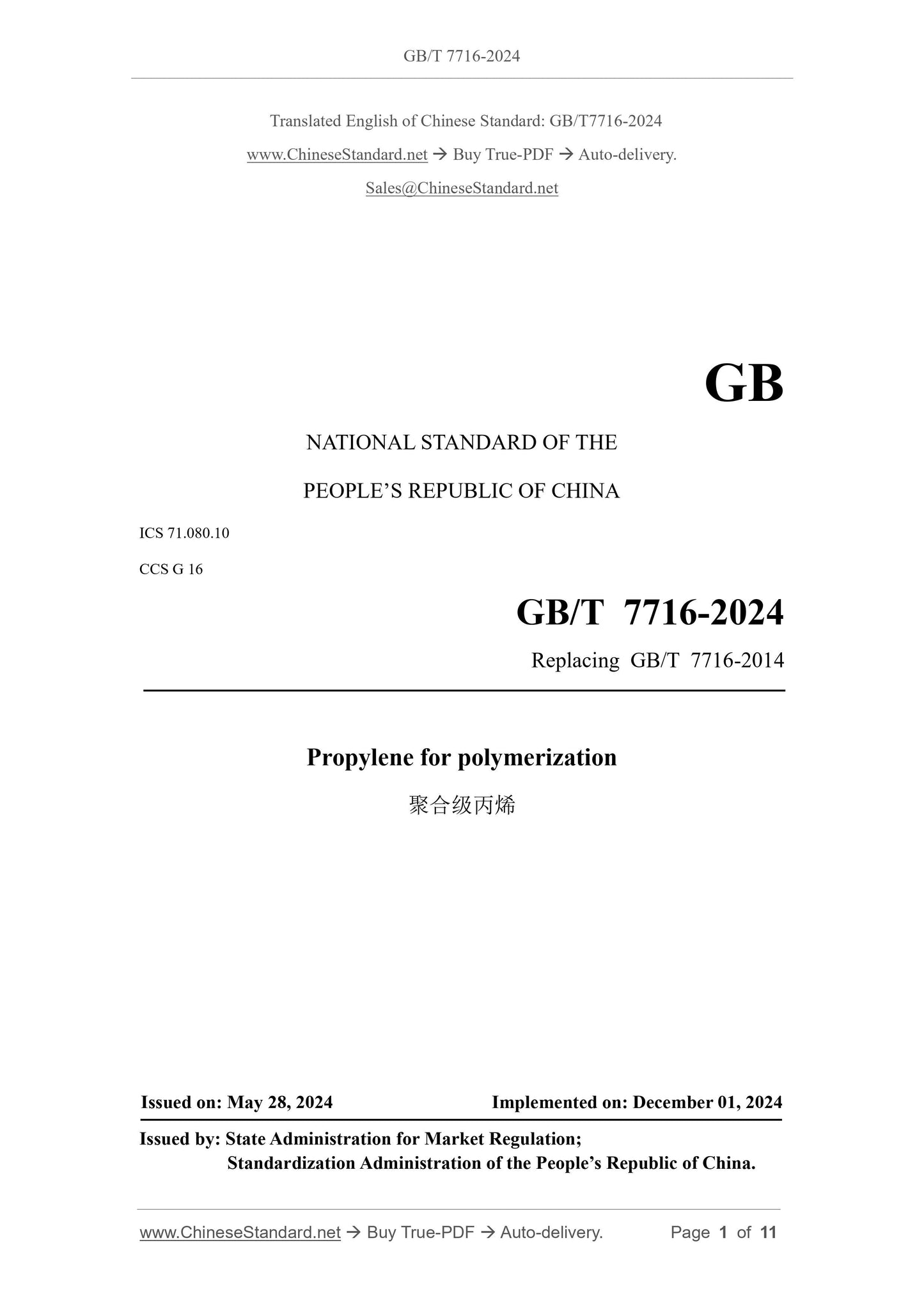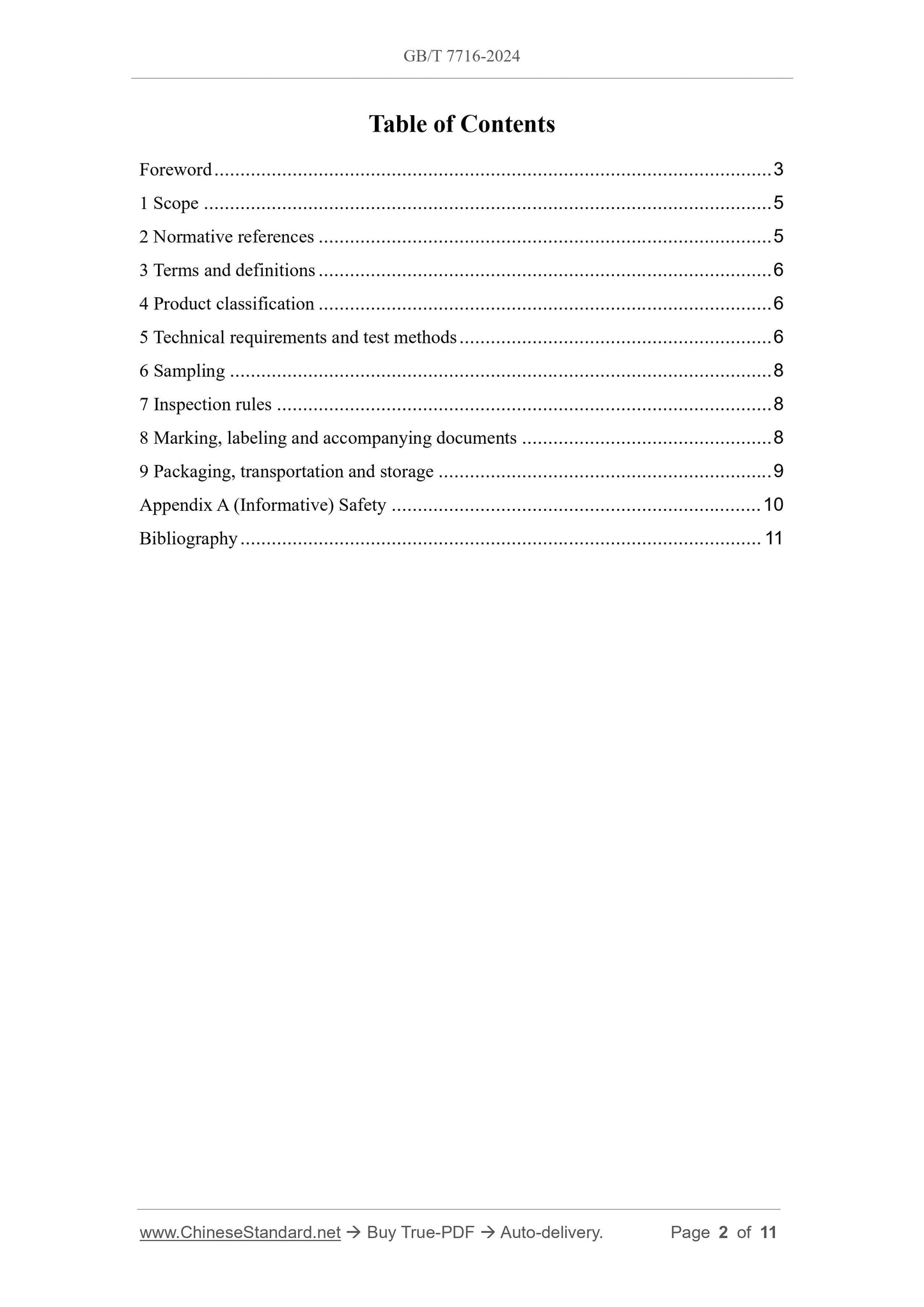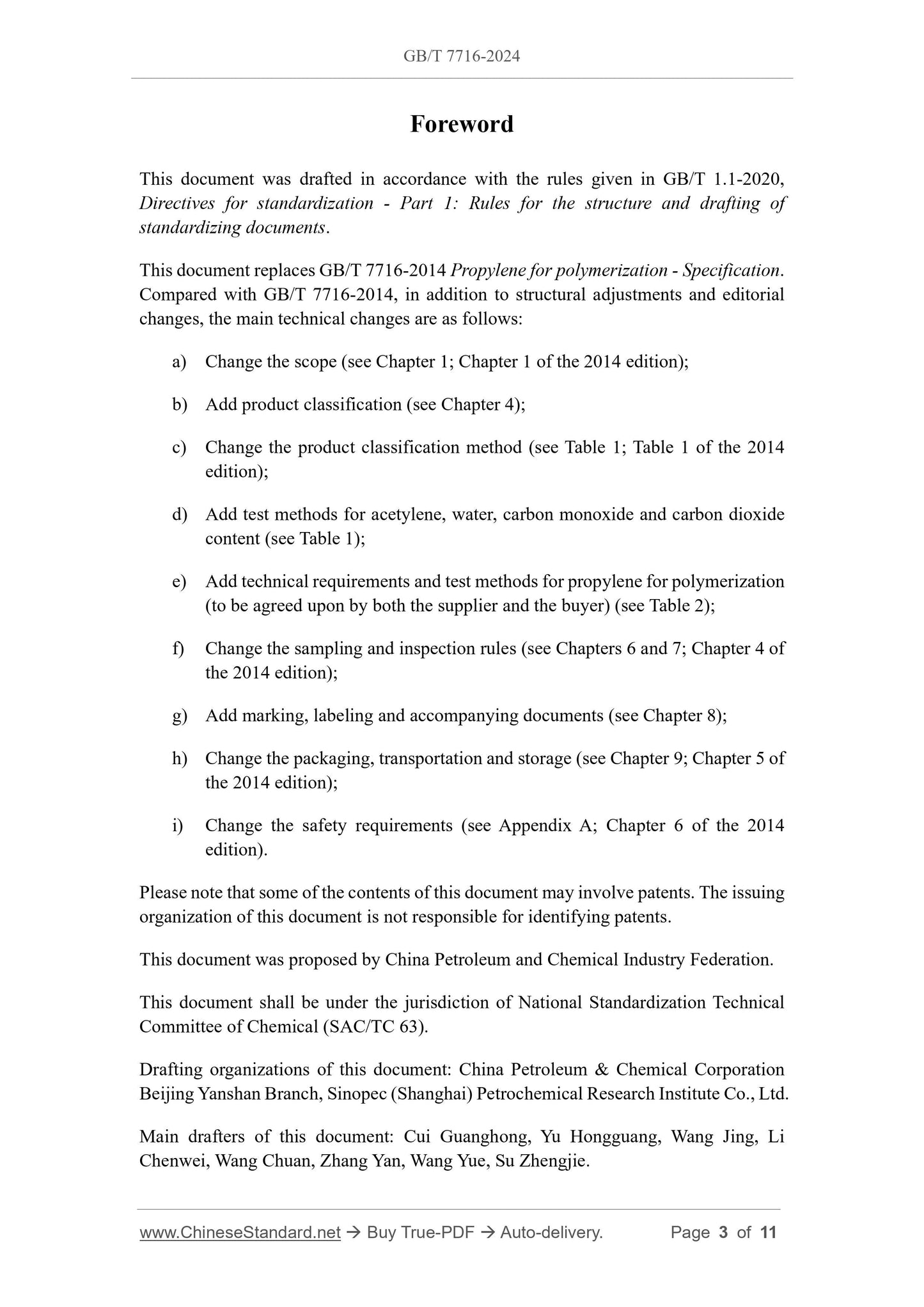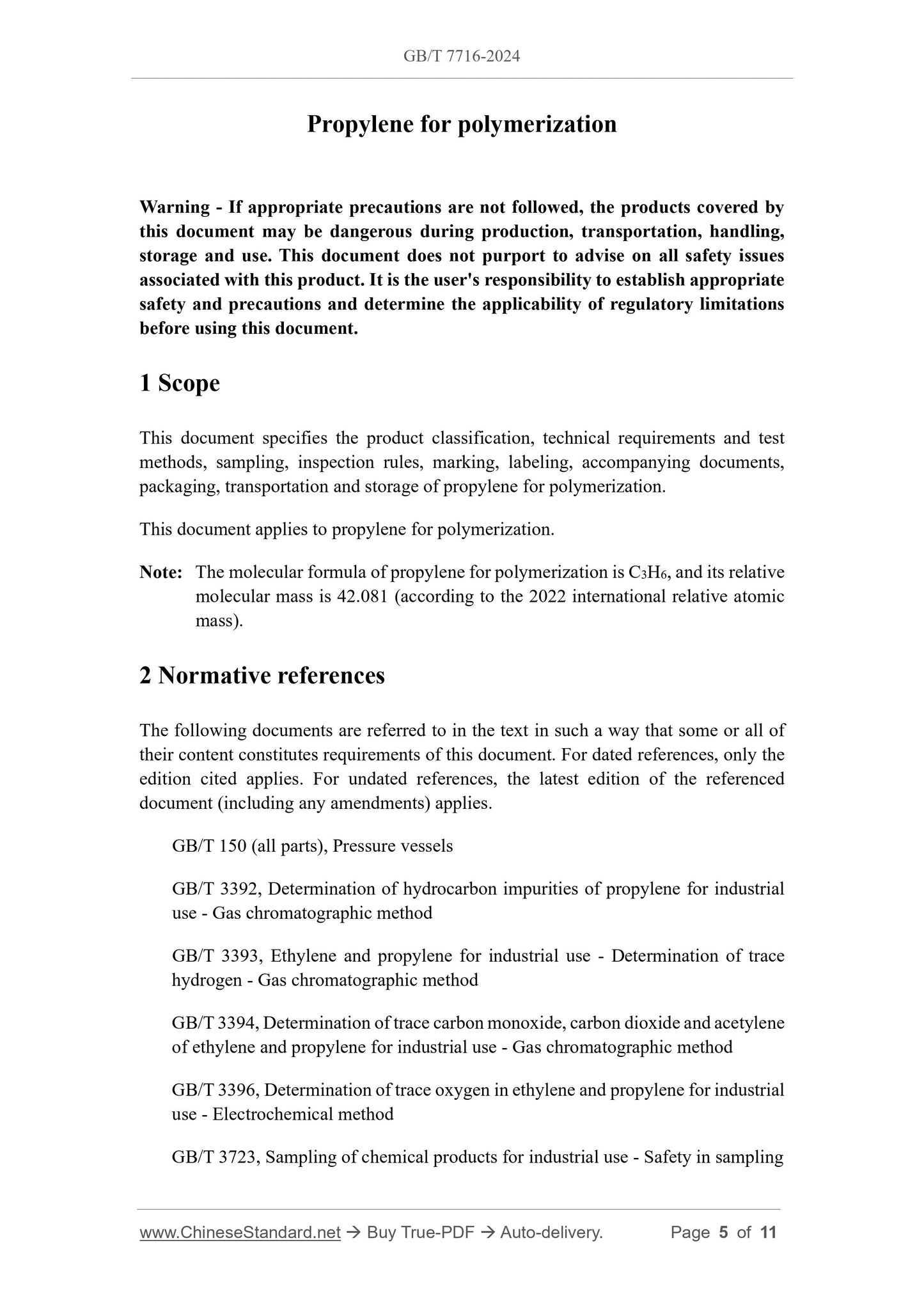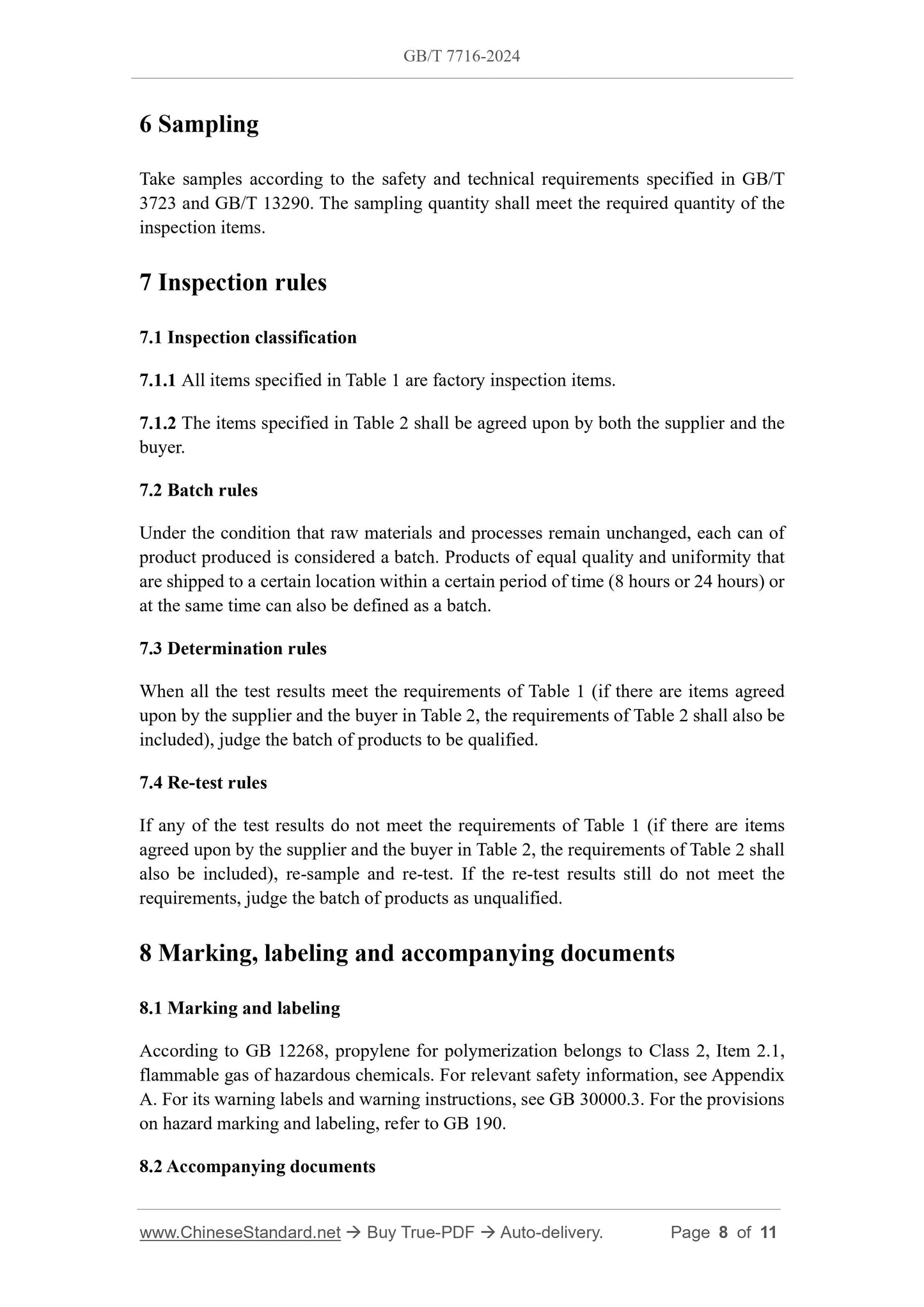1
/
of
6
www.ChineseStandard.us -- Field Test Asia Pte. Ltd.
GB/T 7716-2024 English PDF (GB/T7716-2024)
GB/T 7716-2024 English PDF (GB/T7716-2024)
Regular price
$200.00
Regular price
Sale price
$200.00
Unit price
/
per
Shipping calculated at checkout.
Couldn't load pickup availability
GB/T 7716-2024: Propylene for polymerization
Delivery: 9 seconds. Download (and Email) true-PDF + Invoice.Get Quotation: Click GB/T 7716-2024 (Self-service in 1-minute)
Newer / historical versions: GB/T 7716-2024
Preview True-PDF
Scope
This document specifies the product classification, technical requirements and testmethods, sampling, inspection rules, marking, labeling, accompanying documents,
packaging, transportation and storage of propylene for polymerization.
This document applies to propylene for polymerization.
Note. The molecular formula of propylene for polymerization is C3H6, and its relative
molecular mass is 42.081 (according to the 2022 international relative atomic
mass).
Basic Data
| Standard ID | GB/T 7716-2024 (GB/T7716-2024) |
| Description (Translated English) | Propylene for polymerization |
| Sector / Industry | National Standard (Recommended) |
| Classification of Chinese Standard | G16 |
| Word Count Estimation | 10,145 |
| Date of Issue | 2024-05-28 |
| Date of Implementation | 2024-12-01 |
| Issuing agency(ies) | State Administration for Market Regulation, China National Standardization Administration |
Share
